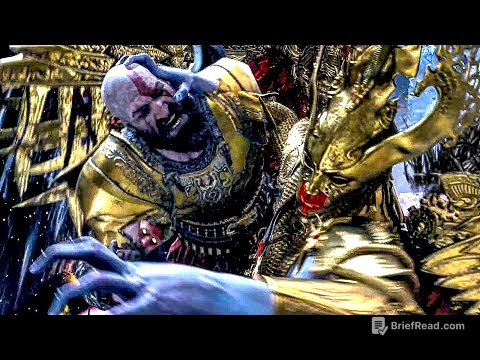TLDR;
This workshop focuses on characterizations and framing in debating, explaining what they are, why they're important, how to structure them, and how to use them to win debates. It emphasizes the subjective nature of context, the importance of nuance, and the strategic use of characterizations to influence judges and outmaneuver opponents.
- Characterizations and framing are crucial for making arguments plausible and relevant.
- Nuance and detailed justifications enhance the persuasiveness of characterizations.
- Strategic use of characterizations can shift the focus of the debate and secure a win.
Start [0:00]
The workshop begins by introducing the topics of characterization and framing in debate. The structure of the workshop will include defining characterizations and framing, explaining their importance, outlining principles of characterization, discussing practical concerns like what to characterize and how to structure it, and providing tips on winning debates through effective characterization.
What are characterisations and framing? [1:10]
Characterizations are the parts of a speech where different actors or contexts are described to make arguments more plausible or relevant. Framing, in this context, is the aggregate of all characterizations used throughout a case, painting a picture of the world that supports the case and makes it sound more relevant. Characterizations are individual pieces, while framing is the overall picture they create together.
Why you should do them (well) [2:49]
Characterizations are important because debates are often won or lost based on them, especially in high-level rooms where teams know the obvious arguments. Motions are often characterization-heavy, particularly those about narratives, norms, or glorification. Good characterization improves speech quality and speaker scores. Consciously thinking about and improving characterizations can lead to rapid improvement in debating skills.
Principles of characterisations [6:10]
There is always a spectrum of subjectivity in interpreting reality, allowing debaters to choose interpretations that suit their case, but outright lies or outlandish claims should be avoided. Characterizations are powerful because they often sound objective, and confidence in presenting them can be very effective. Nuance is achieved by avoiding monolithic views of actors, not assuming actors are inherently rational, considering external circumstances, and analyzing long-term trends rather than relying solely on examples.
What to characterise [16:08]
When deciding what to characterize, prioritize actors being given more power or things being banned. In less obvious cases, work backward from the main arguments to identify what needs characterization. Determine if the other side is likely to contest a point or if the impacts of the case depend on certain characterizations being true.
Structuring characterisations [18:40]
A basic structure for characterizations includes a descriptive claim, a justification, and an implication. Most people stop at the descriptive claim, but it's important to justify the claim with reasons and explain the implication of the characterization for the debate. Use appropriate language to convey the correct emotion to the judge and clearly state what the characterization does for the debate.
Example: Kazakhstan motion [23:40]
An example is provided using a motion about Kazakhstan holding free and fair elections. The argument is that this will appease the population and disincentivize protests. Characterizations include that people will still vote for party-sympathetic candidates because the opposition is weak and the ruling party provides decent economic development. The current trend suggests that without change, people will become resentful, leading to protests. The implication is that the ruling party finds itself in a delicate context where this move won't threaten its power but addresses the risk of losing power in the future.
Employing characterisations [29:00]
Characterizations can be employed throughout a speech, not just at the beginning. They can be included in the introduction, at the start of each argument, or as the first point in a speech. It's recommended not to place characterizations after the argument's impacts, as the judge may have already lost interest.
Exercise: Sexual education motion [32:10]
An exercise is presented involving a motion about sex education classes teaching techniques for sexual gratification. Participants are asked to characterize the topic from both government and opposition perspectives. The government side aims to characterize it as empowering and providing safe, otherwise unavailable information. The opposition aims to portray it as uncomfortable and humiliating, leading to unhealthy attitudes and preventing useful teaching.
Rebutting characterisations [41:15]
Many people don't recognize or rebut characterizations. Pay attention to other teams' characterizations and don't concede points just because they sound intuitive. Question characterizations, even if they seem intuitive, and consider counter-characterizations. Expose the characterization, question its logic, provide a counter-characterization, weigh the alternatives, and engage with the best-case scenario.
Characterisations as a winning strategy [47:04]
Characterizations help with weigh-ups, make arguments more relevant, and make opposing arguments less plausible. They can be used as a winning strategy from closing by characterizing why an actor is likely to act a certain way, making impacts dependent on that characterization. Over-crediting the opposite bench can make a characterization seem more important. Simple characterizations can out-frame the entire debate, as demonstrated in examples like the Zagreb UDC 2014 final and a motion about working from home.









